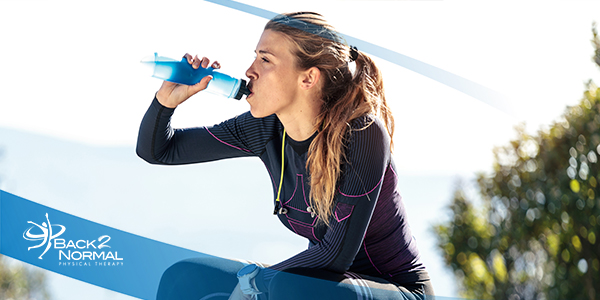Running is one of the best ways to stay fit, but it also comes with the risk of injury if not done correctly. Overuse, improper form, and inadequate recovery can sideline even the most experienced runners.
The good news?
You can train smarter, not harder, to prevent injuries and optimize performance. If you’re looking for expert guidance to stay injury-free and keep running strong, our team in St. Petersburg, FL is here to help.
Understanding the Most Common Running Injuries
Before we dive into prevention strategies, let’s look at the most common injuries runners face:- Runner’s Knee (Patellofemoral Pain Syndrome) – Pain around the kneecap due to improper tracking and stress.
- Shin Splints – Pain along the shinbone, often caused by overtraining or poor footwear.
- Achilles Tendinitis – Inflammation of the Achilles tendon due to excessive strain.
- Plantar Fasciitis – Heel pain resulting from tight calf muscles, poor foot mechanics and shoe selection.
- IT Band Syndrome – Outside knee pain caused by a tight iliotibial (IT) band creating inflammation and irritation around the knee joint.
- Stress Fractures – Tiny cracks in the bone from repetitive impact, often due to overtraining or insufficient recovery.
- Hamstring Strains – Tight or weak hamstrings can lead to strains, causing pain and reduced mobility.
10 Tips to Prevent Running Injuries
1. Prioritize Strength and Mobility Training
Building strength in key muscle groups—especially the core, glutes, and legs—improves stability and reduces the risk of injury. Incorporating movement therapy and mobility exercises into your routine helps maintain optimal biomechanics. Runners often overlook strength training, but exercises like squats, lunges, and deadlifts can significantly improve running efficiency and reduce the likelihood of injuries.2. Follow a Progressive Training Plan
One of the biggest mistakes runners make is increasing mileage too quickly. Follow the 10% rule—never increase your weekly mileage by more than 10%—to give your body time to adapt. Cross-training with activities like cycling and swimming can help maintain cardiovascular fitness while reducing impact stress on your joints.3. Invest in Proper Footwear
Wearing the wrong running shoes can lead to pain and injury. Get fitted for running shoes based on your gait and foot structure, and replace them every 300-500 miles to maintain support. Additionally, consider using custom orthotics if you have biomechanical imbalances that could contribute to injury.4. Optimize Recovery with Hands-On Therapy
Recovery is just as important as training. Techniques like hands-on manual therapy, deep tissue massage, and myofascial release can help reduce muscle tension, enhance circulation, and promote healing. Adding recovery modalities such as dry needling, cupping, and assisted stretching can further improve muscle flexibility and blood flow, reducing injury risk.5. Listen to Your Body
Pain is your body’s way of signaling a problem. If you experience persistent pain or discomfort, don’t push through it. Seeking early intervention with pain and injury management can prevent minor issues from turning into major setbacks. Recognizing the difference between soreness and pain is key—if discomfort lingers beyond 48 hours or worsens with activity, it’s time to seek professional help.6. Use Regenerative Therapy for Faster Healing
If you’re dealing with chronic pain or injury, regenerative therapy offers cutting-edge solutions to accelerate healing and restore tissue function. These therapies, including Deep Tissue Laser therapy, Astym Therapy and advanced soft tissue techniques, help speed up recovery and reduce inflammation.7. Warm Up and Cool Down Properly
Start every run with a dynamic warm-up—like leg swings, high knees, and butt kicks—to activate your muscles. After your run, stretch, use a percussion gun to aid recovery and prevent stiffness. MELT & Foam Roller Training is an excellent way to keep muscles and connective tissue flexible and reduce inflammation. Cooling down with light jogging or walking helps remove lactic acid buildup and prevents post-run stiffness.8. Consider Recovery Technologies
Advanced recovery methods, such as Bemer Therapy, Normatec Boots Compression Therapy, and Trigger Point Dry Needling, can accelerate muscle repair and enhance performance. Cold therapy and infrared sauna treatments can also aid in reducing inflammation and muscle soreness.9. Improve Running Form
Poor running mechanics can contribute to overuse injuries. Working with a specialist to analyze your gait can identify inefficiencies in your stride. Small adjustments, such as shortening your stride, increasing cadence, or maintaining an upright posture, can significantly reduce stress on your joints.10. Stay Hydrated and Maintain Proper Nutrition
Dehydration and poor nutrition can lead to muscle cramps and fatigue, increasing the risk of injury. Ensure you’re consuming enough water, electrolytes, and nutrient-dense foods and protein to support muscle function and recovery. Nutritional therapy can help runners optimize their diet for performance and longevity.The Role of Physical Therapy in Running Performance
A personalized physical therapy plan can help runners address muscle imbalances, improve running mechanics, and prevent future injuries. Our team specializes in:- Gait analysis and biomechanical assessments
- Soft tissue mobilization and manual therapy
- Strength and mobility programs tailored for runners
- Recovery strategies to optimize long-term performance






